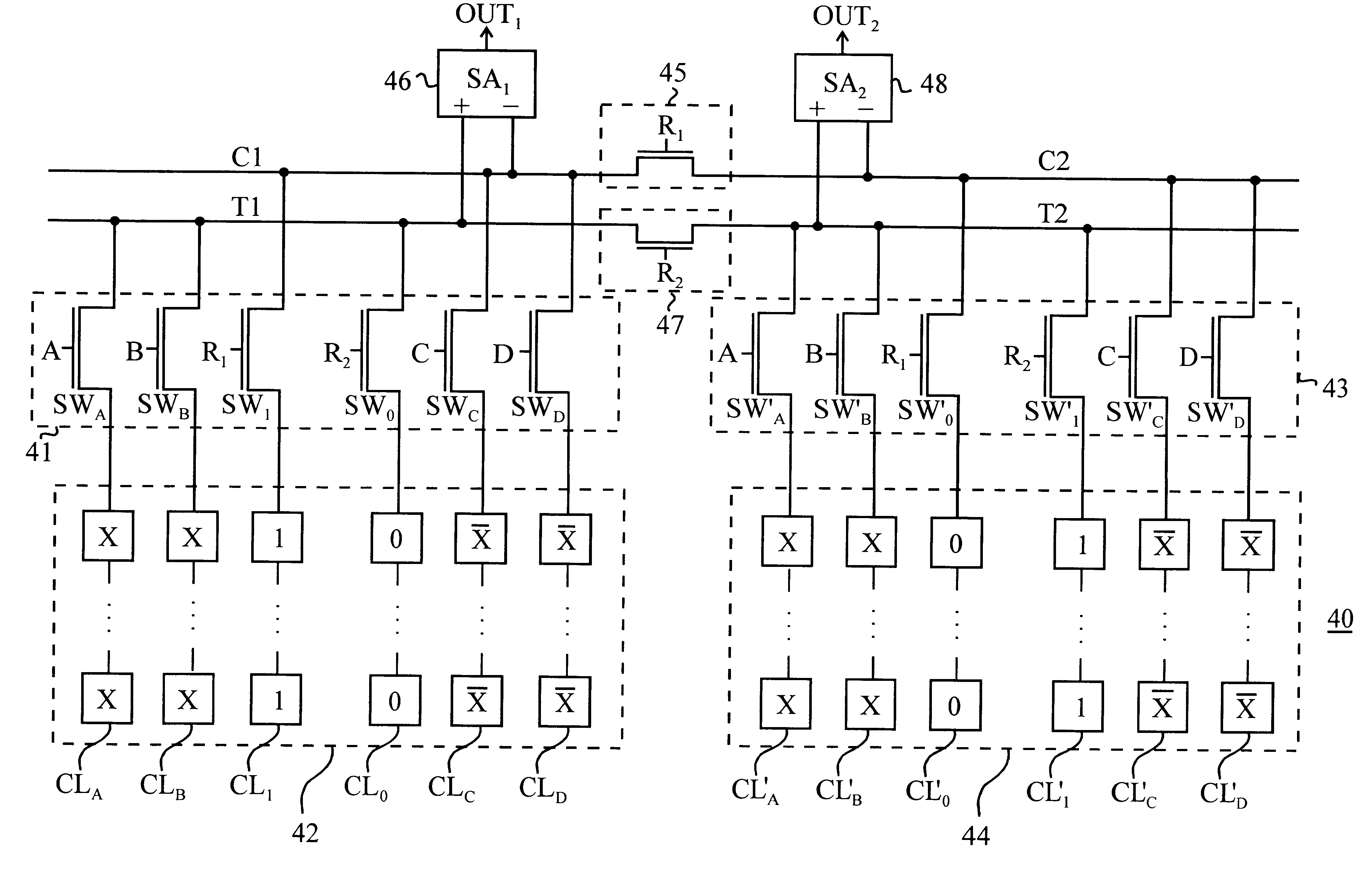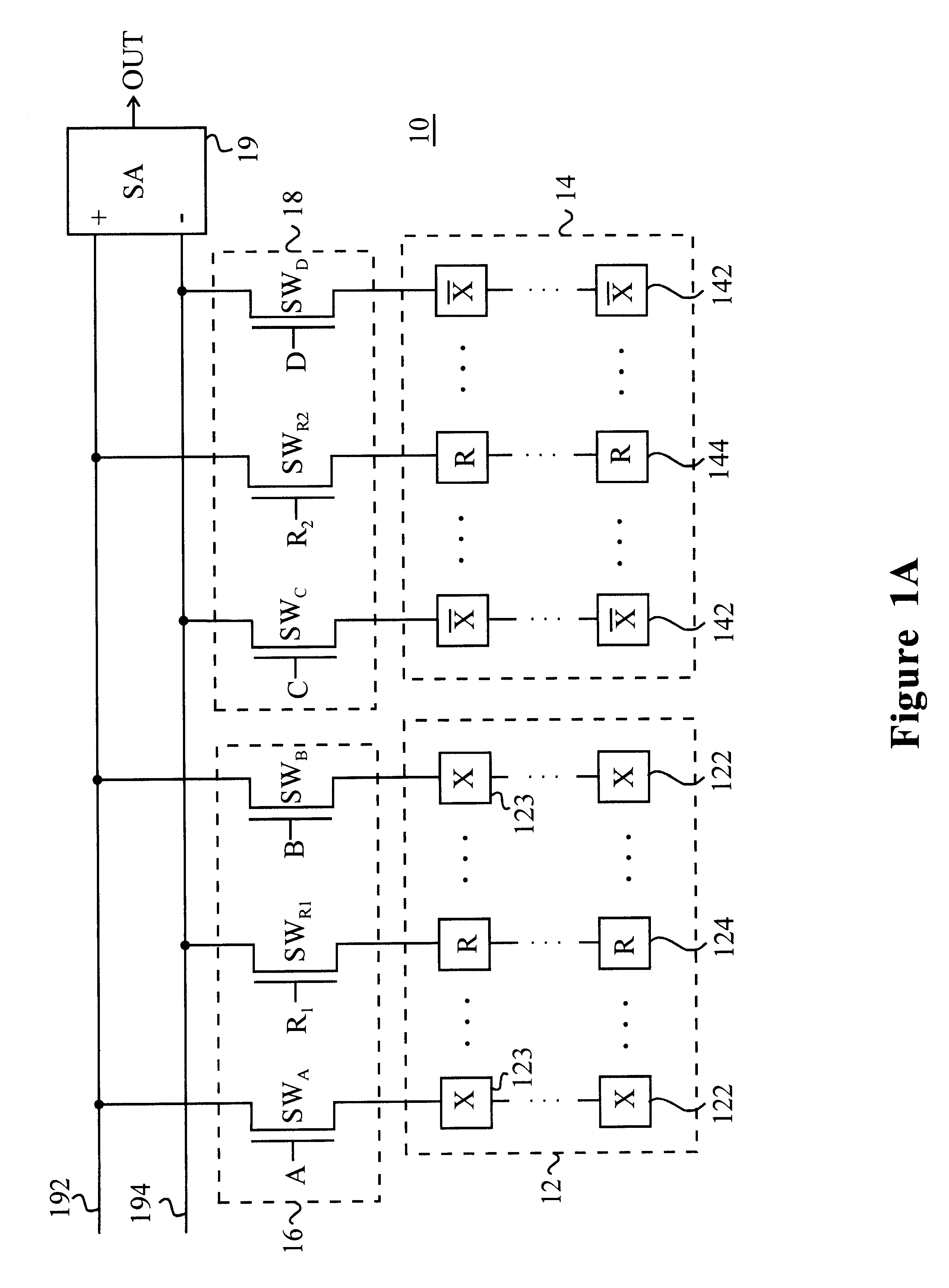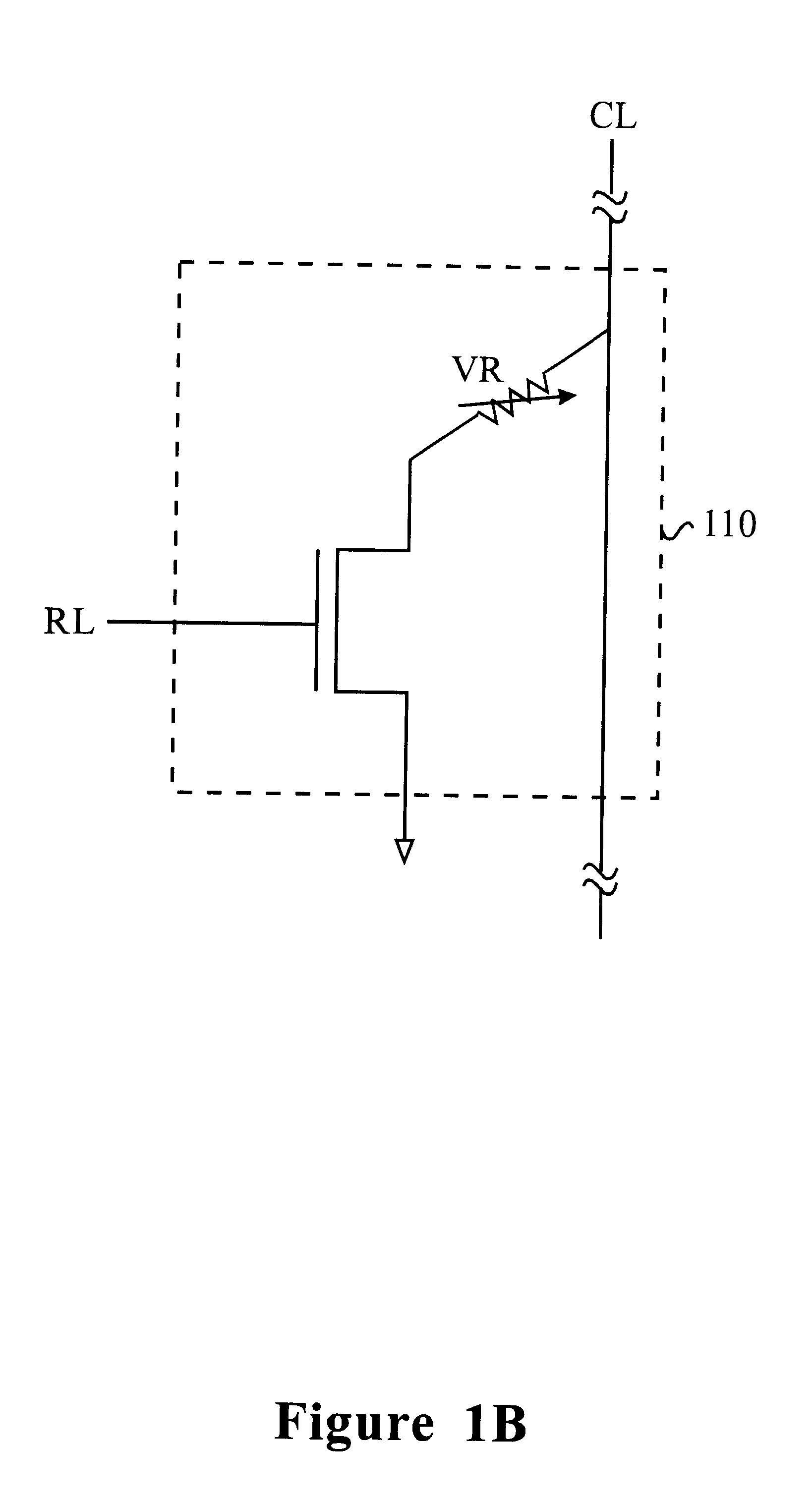Interconnection network for connecting memory cells to sense amplifiers
a technology of interconnection network and memory cell, which is applied in the field of memory devices, can solve the problems of delay and/or disruption of signals being sensed in the amplifier, affecting the sensing speed of the sense amplifier, and the lower speed of read/write operation, so as to prevent delay and reduce noise
- Summary
- Abstract
- Description
- Claims
- Application Information
AI Technical Summary
Benefits of technology
Problems solved by technology
Method used
Image
Examples
Embodiment Construction
Referring to FIG. 1A, there is provided an embodiment of an interconnection network for connecting memory cells to sense amplifiers according to the present invention. FIG. 1A schematically shows a part of a memory device using an interconnection network having symmetric configuration. A memory device 10 includes, for example, first and second sub-arrays 12, 14 each having memory cell columns 122, 142 and a reference cell column 124, 144, first and second switch units 16, 18 associated with the first and second sub-arrays 12, 14, respectively, and a sense amplifier 19 for sensing and amplifying data from a selected memory cell in the sub-arrays. As shown in FIG. 1A, the interconnection network with the sub-arrays 12, 14 and the switch units 16, 18 has a symmetric configuration, thereby allowing the memory device 10 to have high speed and common mode noise immunity.
In the first sub-array 12, there are multiple memory cell columns 122 (only two memory cell columns are shown in a sub-a...
PUM
 Login to View More
Login to View More Abstract
Description
Claims
Application Information
 Login to View More
Login to View More - R&D
- Intellectual Property
- Life Sciences
- Materials
- Tech Scout
- Unparalleled Data Quality
- Higher Quality Content
- 60% Fewer Hallucinations
Browse by: Latest US Patents, China's latest patents, Technical Efficacy Thesaurus, Application Domain, Technology Topic, Popular Technical Reports.
© 2025 PatSnap. All rights reserved.Legal|Privacy policy|Modern Slavery Act Transparency Statement|Sitemap|About US| Contact US: help@patsnap.com



